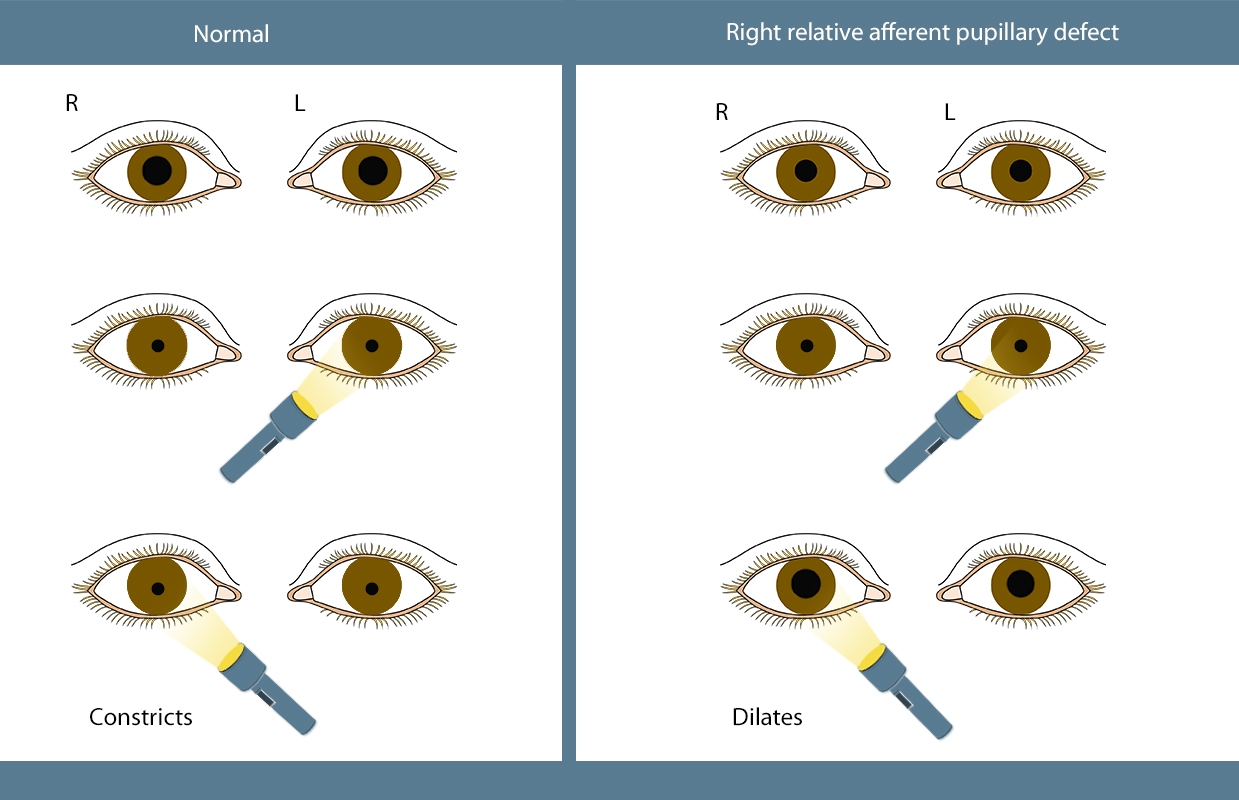

Many times, a disease process that affects the efferent visual system can manifest through a combination of findings related to eyelid position, pupil size and ocular motility.
#ARGYLL ROBERTSON PUPIL AFFERENT OR EFFERENT LIMB LOSS HOW TO#
When dealing with any issue involving pupil sizes, eyelids or eye movements, you must know how to test all measures of the efferent visual system. The efferent system is associated with ocular motility issues, ptosis or eyelid retraction, anisocoria and nystagmus. Therefore, the afferent system deals with optic nerve function. The afferent system carries impulses from the eye to the central nervous system, whereas the efferent system carries impulses from the central nervous system to the eye. However, if you think of the afferent and efferent systems separately, it will be easier to determine which tools and tests to employ to make a proper diagnosis. Granted, a disease process may affect both systems. (1) It is important to make this distinction so that you know which tests to do when checking for a certain disease process. However, this article covers the important basics that will help you not only become more confident at diagnosing and monitoring neuro-ophthalmic disease of the efferent visual system, but also feel more confident in referring and comanaging a patient with an appropriate specialist.Īs referenced in the June 2008 article regarding the afferent visual system, separating your examination into tests that assess the afferent versus efferent visual system can make neuro-ophthalmic disease less overwhelming. It's impossible to include all aspects of the efferent visual system evaluation in one article. Here's the counterpart approach for assessing the efferent visual system. Previous articles have reviewed the afferent visual system.

All you need now is to spend some time sharpening those tools. What you should realize is that you already have all of the required tools to accurately examine and assess a patient who has a neuro-ophthalmic disease process. Either you fear that you'll overlook an important finding and not refer a patient who truly does have neuro-ophthalmic disease, or you're concerned that you'll over-analyze a certain symptom and refer a patient for unnecessary consultation or testing. Many optometrists feel uncomfortable with cases related to neuro-ophthalmic disease. But a stepwise approach can make the task less daunting and keep you on track. Acurately diagnosing neuro-ophthalmic disease can be difficult and intimidating.


 0 kommentar(er)
0 kommentar(er)
